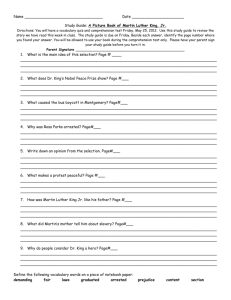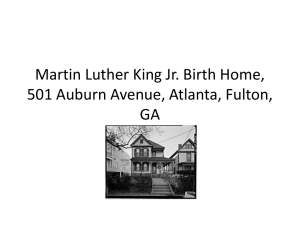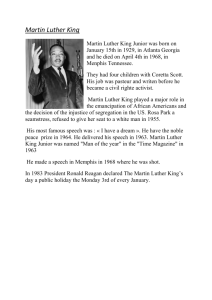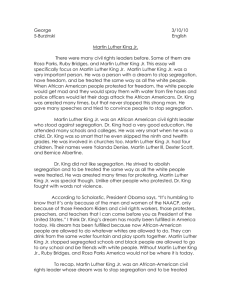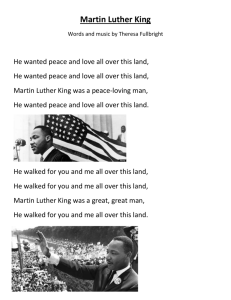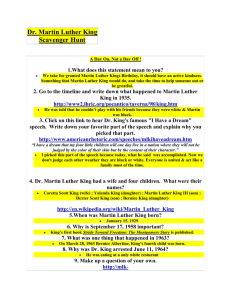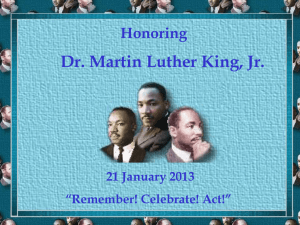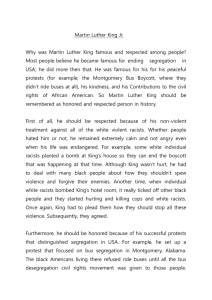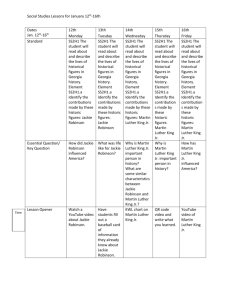Teaching Resources for Martin Luther King, Jr. Day
advertisement
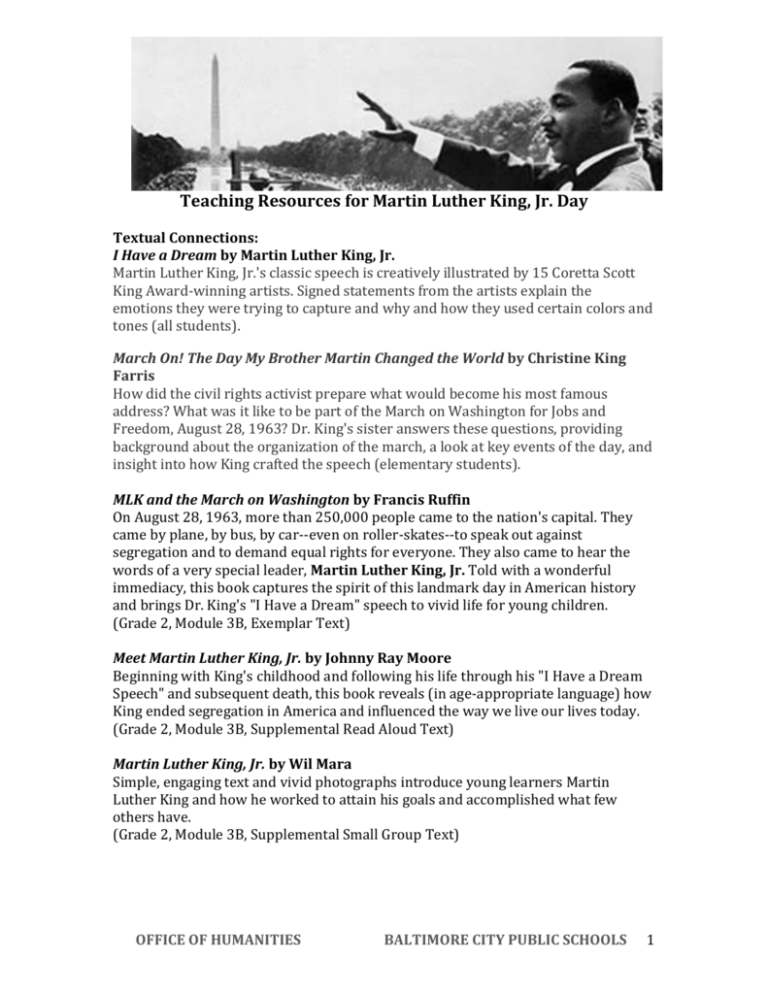
Teaching Resources for Martin Luther King, Jr. Day Textual Connections: I Have a Dream by Martin Luther King, Jr. Martin Luther King, Jr.'s classic speech is creatively illustrated by 15 Coretta Scott King Award-winning artists. Signed statements from the artists explain the emotions they were trying to capture and why and how they used certain colors and tones (all students). March On! The Day My Brother Martin Changed the World by Christine King Farris How did the civil rights activist prepare what would become his most famous address? What was it like to be part of the March on Washington for Jobs and Freedom, August 28, 1963? Dr. King's sister answers these questions, providing background about the organization of the march, a look at key events of the day, and insight into how King crafted the speech (elementary students). MLK and the March on Washington by Francis Ruffin On August 28, 1963, more than 250,000 people came to the nation's capital. They came by plane, by bus, by car--even on roller-skates--to speak out against segregation and to demand equal rights for everyone. They also came to hear the words of a very special leader, Martin Luther King, Jr. Told with a wonderful immediacy, this book captures the spirit of this landmark day in American history and brings Dr. King's "I Have a Dream" speech to vivid life for young children. (Grade 2, Module 3B, Exemplar Text) Meet Martin Luther King, Jr. by Johnny Ray Moore Beginning with King's childhood and following his life through his "I Have a Dream Speech" and subsequent death, this book reveals (in age-appropriate language) how King ended segregation in America and influenced the way we live our lives today. (Grade 2, Module 3B, Supplemental Read Aloud Text) Martin Luther King, Jr. by Wil Mara Simple, engaging text and vivid photographs introduce young learners Martin Luther King and how he worked to attain his goals and accomplished what few others have. (Grade 2, Module 3B, Supplemental Small Group Text) OFFICE OF HUMANITIES BALTIMORE CITY PUBLIC SCHOOLS 1 The King Years: Historic Moments in the Civil Rights Movement by Taylor Branch This brief book draws on Branch’s trilogy of the Civil Rights Movement and focuses on pivotal moments in the movement. The March on Washington is one of the featured moments (secondary students). Websites: Center for Civic Education In this lesson students in grades 7-12 have the opportunity to discuss how words have the power to bring about political, social, or economic change in society. By reviewing quotations from various leaders, activists, and others, students can begin to understand how ideas have an impact on the hearts and minds of people and can be a catalyst for change. Finally, students will reflect on the words of Martin Luther King Jr. and determine their relevance to the political, social, and economic issues of today. Discovery Education Discovery has entire site dedicated to Martin Luther King, Jr. Day complete with video clips, images, and writing prompts. (City Schools Employees have access to this site. Use your TSS username and BCPSS1 as the password.) National Archives Educational activities and primary sources about the March on Washington. National Park Service The Dr. Martin Luther King, Jr.'s Legacy of Racial and Social Justice: A Curriculum for Empowerment is a teacher's resource guide that provides activities for students in kindergarten through eighth grade to explore the rich history of the civil rights movement and the persona of Dr. Martin Luther King, Jr. Scholastic This website includes service based lesson plans for grades 3-8, information about an art contest for students in grades K-12, and other classroom resources such as videos, newspaper articles and book lists. Smithsonian Museum of American History A DBQ (Document Based Question) on the March of Washington, written for use in grades 5-12. 2 OFFICE OF HUMANITIES BALTIMORE CITY PUBLIC SCHOOLS

